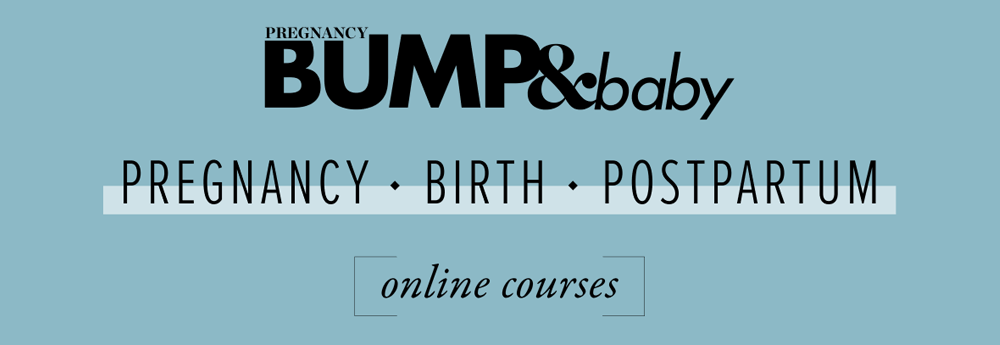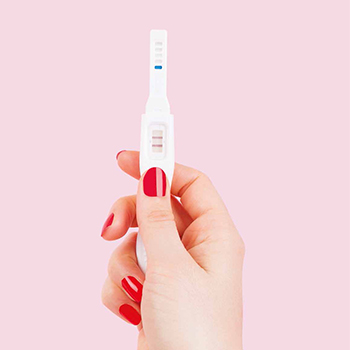
So you’ve never actually changed a nappy before, and you’re not sure if what you’re seeing in there is, well… Normal? Welcome to the wacky world of baby poo.
Greenish-black, tarlike, sticky, resembles motor oil
WHEN YOU’LL SET IT: Within the first 24 hours of birth
WHAT IT IS: Meconium – this is newborn poo which is made up of amniotic fluid, mucous, skin cells, and other things your baby was ingesting in the womb (best not to think too much about it). It can be hard clean, so bring lots and lots of baby wipes with you to the birthing centre or hospital.
Army-issue green
WHEN YOU’LL SEE IT: Two to four days after birth
WHAT IT IS: Transitional poo – this is poo you’ll see once your baby starts digesting breast milk or formula, and it indicates that his or her intestinal tract is working.
Yellow or slightly greenish, mushy, runny, seedy or cheesy-looking
WHEN YOU’LL SEE IT: If your baby is breastfed
WHAT IT IS: Healthy breastfed baby poo – you’ll see this poo at least once a day until your baby is about a month old, and after this, it will be pretty variable. Some breastfed babies poo at every feed, and others poo every seven to 10 days (although this sounds awesome, the poo, when it comes, tends to be a poonami that goes everywhere. Consider yourself warned).
Brown, peanut buttery, pastelike
WHEN YOU’LL SEE IT: If your baby is formula-fed
WHAT IT IS: Healthy formula-fed baby poo – and you’ll see every shade on the brown colour spectrum, from tan to yellow to greeny-brown. Formula-fed babies usually poo every day or every second day, and their poos tend to be a bit firmer-formed.
Brown or dark brown, mushy, thicker than peanut butter
WHEN YOU’LL SEE IT: If your baby has started on solid foods
WHAT IT IS: Healthy poo of a baby who is eating solids is firmer and a bit more adult-like. It’s smellier, too. However, if you see hard pellets or very soft, runny diarrhoea, your baby may either be constipated or ill.
Troubleshooting
Bright green, frothy, algae-like
WHEN YOU’LL SEE IT: If your baby is breastfed and is getting too much foremilk
WHAT IT IS: Foremilk is the low-kilojoule milk which comes first when you’re breastfeeding. If your baby isn’t getting enough of your hindmilk – the higher-fat stuff that comes later on – she might not be feeding enough at each breast. Try starting feeding her on the breast you finished with last time.
Blackish
WHEN YOU’LL SEE IT: If there’s digested blood in the poo
WHAT TO DO: If your baby is past the meconium stage and has been having normal poos, and you see this colour, it’s a reason for pause. If your baby is getting an iron supplement, their poo may be greenish-black or black, but if not, this colour of poo may indicate that your baby has digested blood in their poo. Get in touch with your GP straightaway.
Yellow, green, brown, and very watery
WHEN YOU’LL SEE IT: When your baby is unwell
WHAT TO DO: Diarrhoea can sometimes leak out of the sides or up the back of a nappy because it’s so watery. It occurs when your baby isn’t well and can be a sign of an infection or allergy. Some babies get diarrhoea when they are teething, too. If your baby has more than two or three diarrhoea-filled nappies, it’s time to take him to the GP, as untreated diarrhoea can lead to dehydration.
Hard pellets
WHEN YOU’LL SEE IT: If your baby is constipated
WHAT TO DO: Constipation often occurs when babies are being introduced to solid foods, as their digestive systems adjust to processing these new nutrients. Your baby might be uncomfortable or straining to poo when passing these little “rabbit plops”. Constipation can also be a sign of a milk or soy protein sensitivity, or an intolerance to something in their breastmilk or formula. One or two constipated nappies aren’t a big deal, but more than this means it’s time to call the GP.
Greenish, slimy, mucousy
WHEN YOU’LL SEE IT: If your baby is drooly or has an infection or allergy
WHAT TO DO: Sometimes if your baby is particularly drooly, like when he’s teething, his poo can be streaked with undigested saliva. However, mucous is also a sign of an allergy or infection, particularly if your baby is showing any other symptoms. If you’re seeing poos like this for more than a day or two, call the GP.
Red, or streaked with red blood
WHEN YOU’LL SEE IT: When something is wrong
WHAT TO DO: If your baby’s poo has blood in it, even if the poo is healthy or your baby seems fine, take her to the GP straightaway. It may be a sign of something more serious.
Pale grey, white, or very light and chalky
WHEN YOU’LL SEE IT: When something is wrong
WHAT TO DO: It’s not normal for your baby to have poo that is grey, white, or very light and chalky. Take him to the GP straightaway to get it checked out.
Bloody poo
Bright red blood can show up in your baby’s stools for a few different reasons. Call your doctor if you notice:
- Normal poo tinged with red blood, which is often a sign of a milk protein allergy.
- Constipated poo with a hint of red blood. This is likely to be a result of tears in the anus or tiny haemorrhoids.
- Diarrhoea mixed with red blood, which can indicate a bacterial infection.
Sometimes the blood in a baby’s stool looks black, which means it’s been digested. When this digested blood appears in a baby’s nappy — usually in little flecks that look like black poppy or sesame seeds — it’s often because the baby is breastfed and swallowing blood from Mum’s cracked and bleeding nipples. While this is a sign that you need some pain relief, it doesn’t pose a threat to your baby. Still, you should call the doctor to make sure it’s not something more serious, like bleeding from your baby’s upper intestinal tract.
Image at top: Left: Instagram
BUMP&baby
BUMP & baby is New Zealand’s only magazine for pregnancy and early babyhood. Our team of mums and mums-to-be understand what it’s like to be pregnant in this connected age, and that’s why BUMP & Baby online is geared toward what pregnant women and new mums really want to know.
Other articles of interest
Little tiny baby feet
I love me some little tiny baby feet. And even baby feet that aren’t so little and tiny. My youngest child was born with super-long feet that wouldn’t fit into any of the tiny little booties that were knitted for her.
10 things that might surprise you about trying to get pregnant
Are you having sex often enough, or too often? What about timing? When are you ovulating, anyway? Here are some common fertility mistakes couples make when trying for a baby.







